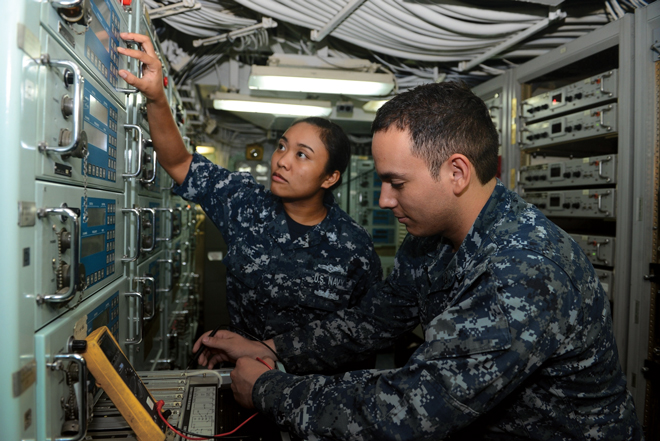
Imagine the year is 1939, and U.S. leaders know they may soon be embroiled in global conflict. President Franklin D. Roosevelt calls Chief of Naval Operations (CNO) Admiral Harold Stark and asks how he would employ our 39-year-old submarine force if the United States were pulled into the war.
CNO: “I don’t know, Mr. President, submarines are very technical; I’m not sure I understand them yet. I tell you what, I’ll ask our Pacific Fleet submarine force commander.”
Admiral Stark then dials the Pacific Fleet Submarine Force Commander, Rear Admiral Wilhelm Friedell.
CNO: “How is that concept of operations for unrestricted submarine warfare coming?”
SubPac: “Funny you should ask, CNO. I have a guy in my office right now who is our expert. Let me put him on the phone. Captain Shaw?”
Captain John Shaw: “Well CNO, what we expect to do in unrestricted submarine warfare is when we find ourselves under attack, we will shut down the diesel engines, and at the same time we’ll shut the head valve and all the hull openings and crash dive. Then we will operate submerged for a while until it’s safe to surface. But right now we can’t do that because VH-1 (head valve) doesn’t shut quickly enough to stop the water from coming into the boat. So we need a better VH-1. Then we’ll be able to do unrestricted submarine warfare.”
CNO: “Captain, put the admiral back on the line.”
SubPac: “Yes, sir!”
CNO: “What I just heard has nothing to do with using submarines in combat. Sounds to me like you have your technicians running the place. I think you need to get some warriors on your staff.”
While this conceit may seem contrived, as a submarine warfare officer who is now in the defense information technology business, my experience is that decades into our cyber warfare journey, this is the condition in which we find ourselves.
This came to mind recently during a major, global cyber event. If this had been a piracy event, or a hostage rescue event, or a terrorist strike, or even a special operations direct action event, most military leaders could have carried on an intelligent discussion about the options available to us, even if they were not members of the operational community best suited to engage in the operation.
But for some reason, decades into the cyber fight, even defense leaders who operate the most sophisticated weapon systems on the planet and/or have impressive technical graduate degrees believe (wrongly) that the understanding and analysis of cyber courses of action are beyond their capabilities. Because they believe it is beyond their capabilities, or because they were never taught, or because they failed to teach themselves, few try to discuss or analyze cyber courses of action.
Instead, senior defense leaders delegate cyber matters to technicians on their staffs. But those technicians are not, nor should they be, warriors. They are technicians, and they do what technicians do—they talk about the technology. Conversations that should be operational in nature devolve into discussions about this or that vendor’s technology, about this or that box, or about this or that system.
The submarine equivalent would be to delegate analysis of combat courses of action in an antisubmarine warfare (ASW) campaign to someone responsible for repairing main seawater pumps, whereupon the discussion immediately diverts to the mechanical seals that keep the water out of the boat. Even if you were to elevate the matter from the technician level to the engineer who designed the main seawater system, would the ASW courses of action analysis in any way be improved?
It is time for senior leaders to shelve the excuse that cyber is “too complicated” for warfighters to understand. It is not.
If the Navy does not put warfighters in charge of cyber warfare and drive the warfighting doctrines, when the cyber fight gets into a “shooting war,” we will be the first U.S. generation to lose a war.
Captain Toti is a frequent contributor to Proceedings and was the 2000 Proceedings Author of the Year.


